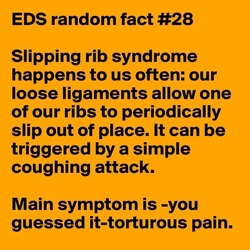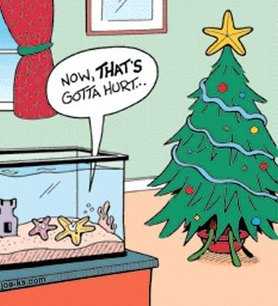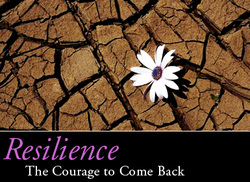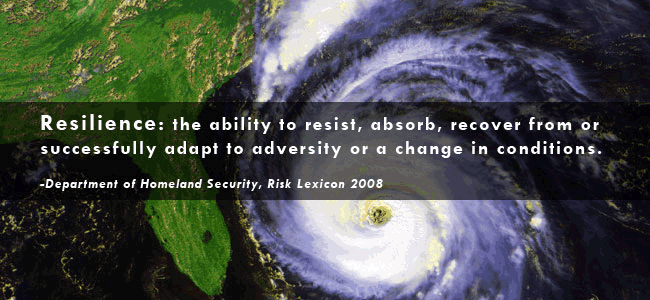Hey everyone! I apologize for the lack of posts, I am still under the weather. Whatever this cold/flu thing is, it has wiped any energy I normally have out of my system. I just saw this part of the speaker series featuring Ellen Lenox Smith, and I though you might enjoy it. I saw Ellen speak at the EDNF conference, and found her to be an engaging speaker, and an amazing person all-around. Speaker Series.
1 Comment
 It doesn't seem quite fair that those of us with EDS should also be able to get the flu, bronchitis, chest colds, and the like. I am coming down with one of the above currently, and am trying with all means possible not to cough. I have my supply of cough suppressant, cough drops, teas, etc. Why all coughing avoidance, you ask? Like many EDSers, I have ribs that have trouble staying in place normally, and awful costochodritis. Every time I have a coughing fit, a rib or three seems to sublux/dislocate. Those of you who have felt this know the pain, and also know that you don't want to press on things too much for fear of making the swelling of costochondritis worse. And, I might be the only one, but I also am afraid that one day I am going to press a rib into my lung or something crazy like that. That would be my kind of luck. Anyways, do you have any surefire cough remedies? What do you do when you have a cough to keep your ribs where they should be? Let us know in the comments!
 Interesting info, as many of us take supplements (and are told to do so by various practitioners). There are definitely a few in the "conflicting" territory that I swear by (cranberry for and to prevent UTIs, for instance, also GABA). Others I totally agree are snake oil (glucosamine, any type of collagen replacement, etc.). A large version of the chart can be found here. What are your thoughts?
Ehlers-Danlos Syndrome, Hypermobility type: A characterization of the patients' lived experience.
Abstract: Hypermobility type Ehlers-Danlos syndrome (EDS-HT) is an inherited connective tissue disorder clinically diagnosed by the presence of significant joint hypermobility and associated skin manifestations. This article presents a large-scale study that reports the lived experience of EDS-HT patients, the broad range of symptoms that individuals with EDS-HT experience, and the impact these symptoms have on daily functioning. A 237-item online survey, including validated questions regarding pain and depression, was developed. Four hundred sixty-six (466) adults (90% female, 52% college or higher degree) with a self-reported diagnosis of EDS-HT made in a clinic or hospital were included. The most frequently reported symptoms were joint pain (99%), hypermobility (99%), and limb pain (91%). They also reported a high frequency of other conditions including chronic fatigue (82%), anxiety (73%), depression (69%), and fibromyalgia (42%). Forty-six percent of respondents reported constant pain often described as aching and tiring/exhausting. Despite multiple interventions and therapies, many individuals (53%) indicated that their diagnosis negatively affected their ability to work or attend school. Our results show that individuals with EDS-HT can experience a wide array of symptoms and co-morbid conditions. The degree of constant pain and disability experienced by the majority of EDS-HT respondents is striking and illustrates the impact this disorder has on quality of life as well as the clinical challenges inherent in managing this complex connective tissue disorder. PubMed info here.  This is the time of year when we all talk about making our resolutions for the new year. Since spoonies like us cannot resolve to "be healthy" (wouldn't that be nice!), I've come up with a list of resolutions that are applicable for those of us with chronic illness and chronic pain:
 Holidays are tough for those of us with chronic illnesses and pain. Typically, hours of travel, cooking, eating, mingling, and pretending that you are fine are expected. Holidays are, in short, a recipe for a pain explosion. I can usually make it through Christmas day OK, but I am suffering (i.e. stumbling from my bed to my couch is the extent of my movement) for the week following. This year, I am going to try to follow my own advice for a low-pain holiday:
 I've realized that in the past 2 years, I've withstood a ridiculous amount of medical procedures, many of which I wouldn't wish on my worst enemy (chest tube, anyone?). I've also battled with insurance companies, disability, non-believing physicians, and dubious friends, family, and co-workers. Some of these skirmishes are ongoing, some probably will always be there. But even through the frustration and the daily pain, I try to keep moving forward. I have been called a "tough cookie" many times, and I believe that living each day with chronic pain and illness has developed the resilience I now have. It makes sense that spoonies like us have to be resilient; it becomes a trait necessary to survive with chronic pain and illness. Resilience is the only way we can function and live anything close to a "normal" life. It is how we can bounce back after a hospitalization, clean the house during a flare, educate physicians, and care for others. We are spoonies, are we are resilient!
|





 RSS Feed
RSS Feed